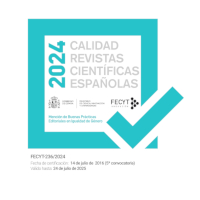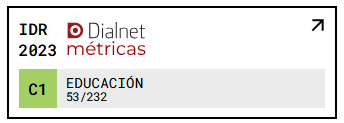La integración escolar de alumnos con necesidades educativas especiales : Entre la realidad y el deseo
DOI:
https://doi.org/10.18172/con.380Abstract
In this paper the lntegration Programme for Pupils wtih Special Educational Needs developped by the Ministry of Education and Culture is valued. Some factors involved in the perceived negative scope are analized, particulary regarding with social attitudes of satisfaction about present results, design conditions and lack of curriculum development policyDownloads
References
AAMR (1997). Retraso Mental. Definición, clasificación y sistemas de apoyo. Madrid: Alianza Psicología.
AINSCOW, M. (1991) Effective Schools for All. Londres: David Fullan.
ARNAIZ, P. y P del HARO, R. (Eds.) (1997). 10 años de integración en España. Análisis de la realidad y perspectivas de futuro. Murcia. Servicio de Publicaciones de la Universidad de Murcia.
BASOCO, J. L. et al. (1997). “La persona con retraso mental y sus necesidades: mejora de su calidad de vida”. Siglo Cero, 169, 28(1 ), 5-18.
COLL, C. (1994). "El tractament de la diversitat a la LOGSE. Espais Didactics, 7, 14-22.
DÍAZ-ESTÉBANEZ, E. y VALMASEDA, M. (1995). “En el camino hacia una educación de calidad para los alumnos y alumnas sordos. Infancia y Aprendizaje, 69-70, 45-60
ECHEITA, G. (1991). "El Programa de Integración del MEC". Cuadernos de Pedagogía, 191, 72-75.
ECHEITA, G. (1992). “La integración escolar a debate”. Aula de Innovación Educativa, 6, 73-77.
ECHEITA, G. (Coord.) (1997). Atenció a la diversitat i necessitats educatives especials. Barcelona: Universitat Oberta de Catalunya.
FIERRO, A. (1991). “Las necesidades educativas especiales en la Reforma Educativa: el horizonte de la Secundaria”. Siglo Cero, 135, 12-22.
FULCHER, G. (1989). Disabling Policies. Lewer: Falmer Press.
HEGARTY, S. (1993). “Reviewing the literature on integration”. European Joumal of Special Educational Needs, 8(3), 194-200.
M.E.C. (1994). La educación especial en el marco de la LOGSE Madrid: Secretaria de Estado de Educación, Centro de Publicaciones, M.E.C.
M.E.C. (1992) “Adaptaciones Curriculares”. En Materiales de Apoyo para la Reforma Educativa. Primaria (Cajas Rojas). Madrid: M.E.C. Centro de Publicaciones.
M.E.C. (1995). EI sistema educativo español. Madrid: CIDE, Centro de Publicaciones M.E.C.
SKIRTIC, T. M. (1991). “Students with special educational needs: Artifacts of the traditional curriculum”. En M. Ainscow (Ed.), Effective Scholls For Al! Londres: Fulton.
OCDE (1995). Integrating students with special needs into mainstrean Schools. París: OCDE.
OCDE (1996). Teacchers and Currículum Reform in Basic Schooling. "Systemic Reform and Lessons for Policy". París: CERI (Documento de Trabajo no publicado del proyecto de igual título)
PORTER, G. (1995). Organización de la escuela: garantizar el acceso y la calidad a través de la inclusión " Prospects, 25(2), 299-310.
UNESCO (1994). Informe Final Conferencia Mundial sobre Necesidades Educativa Especiales: Acceso y Calidad. Marco de Acción y Declaración de Salamanca. París: UNESCO/MEC.
VERDUGO, M. A. (1994). “EI papel de la Psicología de la Rehabilitación en la integración de personas con Discapacidad y en el logro de calidad de vida”. Siglo Cero, 25(6), 33-42.
WANG, M. G., REYNOLDS, M. G. y WALBERG, M. (1995). Handbook of Special and Remedial Education. Research and Practice. Second Edition Oxford: Pergamon.
Downloads
Published
How to Cite
Issue
Section
License
The authors retain copyright of articles and authorize Contextos Educativos. Revista de Educación the first publication. They are free to share and redistribute the article without obtaining permission from the publisher as long as they give appropriate credit to the editor and the journal.
Self-archiving is allowed too. In fact, it is recommendable to deposit a PDF version of the paper in academic and/or institutional repositories.












